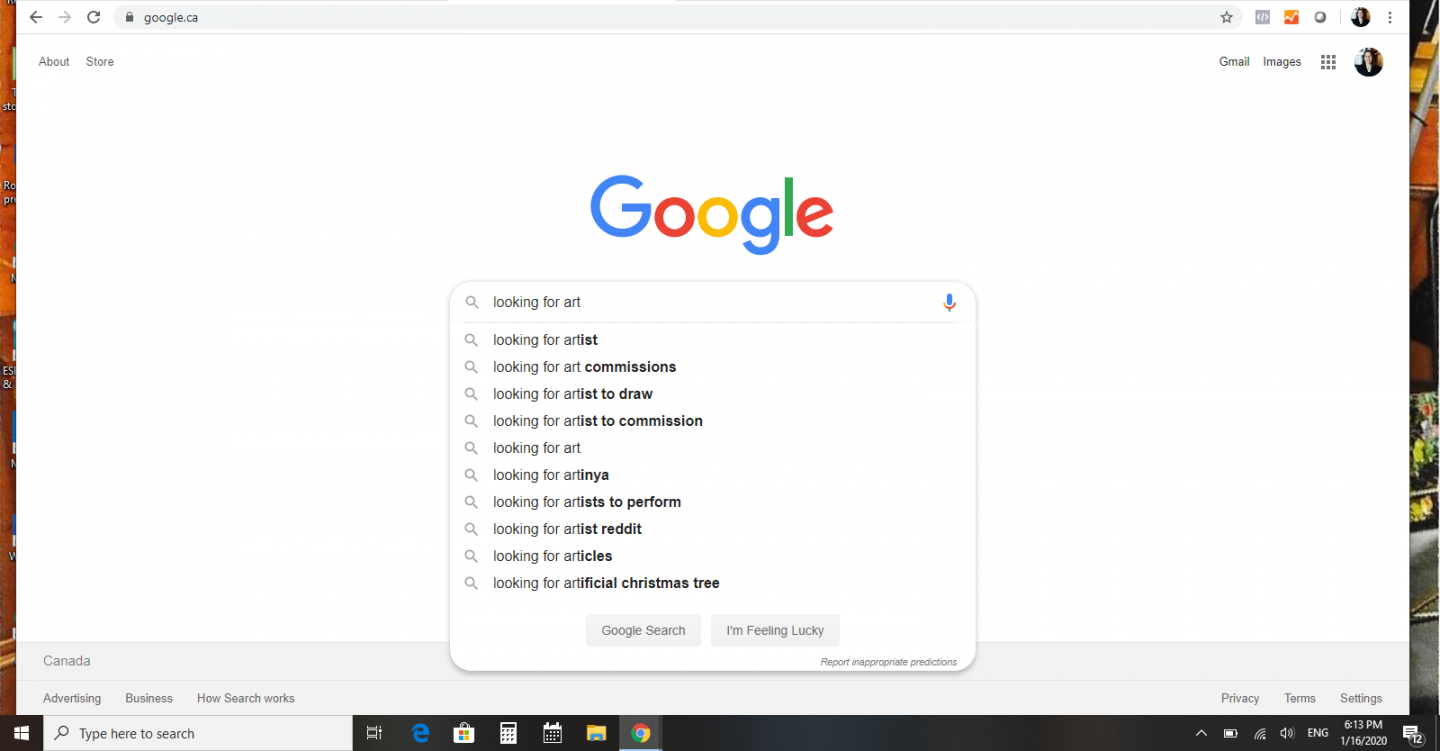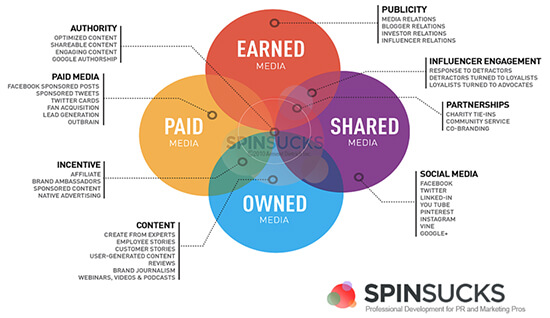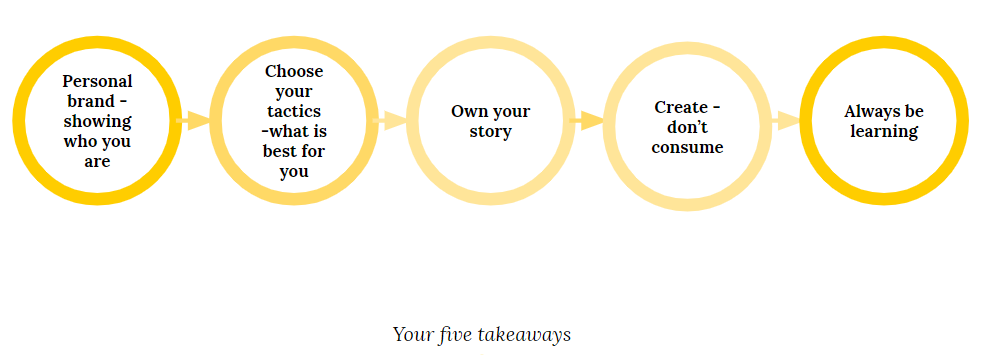Today I had the privilege to share my thoughts on marketing for artists with a brilliant group of creative professionals as part of the L’Air Arts Multidisciplinary Arts Residency. After days of salons featuring the works of theatre makers, musicians, writers, dancers and arts administrators, it was a daunting task to talk about personal branding and networking to this stellar group. As promised to the resident participants, here is a recap of the five takeaways from the presentation titled “Promoting work, promoting self: building you professional network in a digital age”. Special thanks to Danielle Folkerts and Vince Perez for giving me some great feedback while I worked on this presentation. You can find the presentation slides here.
Artists already know that there are many paths and many solutions to one problem (they’re brilliant like that). Like any creative work, there is no one solution to arts marketing. There is not one thing that an artist must be doing to reach one’s goals. Goals are unique and the approach to marketing and communications should be as well.
It’s 2020, and it doesn’t matter who your market is because almost every demographic and psychographic will be interacting with your product or service through an online search, opening an email newsletter, reading an online review, seeing your content on Instagram, watching a video on You Tube, or buying a ticket on your website.
Every day there are 3.5 billion Google searches worldwide. These searches are looking for answers. Can you be the answer? The answer to:
What should I do tonight?
Where can I buy a painting?
Where can I see a dance show?
Where can I take art lessons?
What artists live in my city?
Can you be the answer?

Five marketing questions for artists
1. What does your personal brand say about you?
How do you define a personal brand? A personal brand is defined on Wikipedia as “how you promote yourself. It is the unique combination of skills, experience, and personality that you want the world to see you.” You are not the only one who defines your personal brand. All of your data on the internet combined creates a personal brand that anyone can access.
How you show up in an online search is an important part of being ‘found’.
- How are you represented online?
- How can you differentiate yourself from others?
- What story are you telling about yourself on different channels?
- Who are you talking to online?
- Is your art and your personal life at odds online?
This is not a warning to not be non-political, or to not share what you care about, but rather a warning to be thoughtful about your ‘audience’. Every post, photo and all media about you online is a reflection of who you are and your work. Be sure that it’s who you want to be.
Often people think that a personal brand is how you promote yourself. It is the unique combination of skills, experience, and personality that you want the world to see in you. But, what your personal brand really is: how others see you and the sum of all of their touchpoints. How they feel about you from in-person interactions, digital interactions, experiencing your work, word of mouth from others and any other ways that they understand who you are.
2. Who are you trying to reach and where are they?
Social media is great, but you often have to pay to play.
Who are you trying to reach?
Where is the best place to reach them?
One way to figure this out is to build personas for your target audience. Understanding the characteristics of the people who want to engage with your work will help you figure out how to talk to them and where to find them.
- Who is the persona? What personality traits characterize him/her?
- What roles does s/he play? What does his/her typical day look like?
- Where is the gap in his/her needs/wants beyond what we’re offering?
- When does s/he close this gap?
- Why should s/he care about us as an organization?
Sprout Social has just released a fantastic overview of the stats of most social media platforms and not only the number of people using them in the U.S., but who is using them. Be sure to bookmark this link and visit it regularly to remind yourself where your audience ‘lives’.
Once you know who you are talking to and where they are, then you can choose where to spend your time, energy and money. Don’t be all things to all people, but narrow your focus and go for the best bets.
3. Where is your work found?
In order to figure out where people can find out about your work, we need to look at the four types of media.
- Earned media is gained through promotional efforts.
- Paid media is well, paid for.
- Shared media is content that is shared across social media or shared between multiple owners.
- Owned media is any type of content that you create and own yourself — that’s on your website and any sort of assets or locations that you own as a company.
This graphic from Spinsucks does a great job illustrating the different types of media that can be used to promote your work.

Use channels like social media to get people engaged in your work, but drive them to your own platforms! This means the priority is to build your own content like a website, podcast, videos, and host them yourself. You don’t want to have all of your content live on one platform and then one day – poof! – it’s gone. (Remember MySpace?) Own your content and use earned, shared and paid media to drive people to your own content.
Speaking of websites, here are the top items to include on your individual or organization’s website(s):
- Mobile responsive – phone friendly
- Customer friendly – accessible, easy to use
- Domain name easy to spell and remember
- Have Google Analytics installed and check it at least monthly
- Content – earned media
- Updated regularly – Google likes fresh content
- Call to action – what do you want people to do when they are there?
4. Are you creating or consuming?
I don’t need to share all of the less-than-shocking stats about digital consumption. But, the average adult in the U.S. spends approximately 3 hours per day on one’s phone. The rate of consumption of content on most social media continues to rise and has no signs of slowing down.
My recommendation to artists is to install an app on your phone to monitor screen time use every week to get a sense of how much time you are swiping and scrolling. As creative individuals, you have an immense advantage as you already have content that is interesting to many. Don’t consume – create!
- Document – The creative process is fascinating to watch and discover. Can you share your process using digital tools to build interest in your work?
- Share your pretty face – Content that features the person / people behind the work gets a lot more engagement. Are you highlighting the people and getting your face out there?
- Keep it simple – High production content are not necessary for most creation to promote your work. A simple cell phone is all that’s needed to share photos, videos or any other content.
- Sneak peek – Can you share exclusive content online to drive people to your call to action? It doesn’t have to cost money to be entice people.
- You’re an artist!!! – You are the coolest people on the planet. Why not share your story with those willing to pay for your work?
5. How can you continue to learn?
There are a ton of free resources to help you get better at the things that will help you achieve your goals. Here are some of my favourites:
- Personal branding workbook
- Personal branding worksheet
- Personal branding blog post
- Free website from Wix
- Free website from Squarespace
- Google Analytics courses for beginners
- Facebook and Instagram courses
- Free online design program – Canva
- Me! You can always reach out to me and I will try and help.

During the presentation, Matt Jones asked me if I could define what a friend is. It seems like a complex question, but one that he was grappling with as he tries to develop his brand as a Canadian writer in Paris, and has a very common name that is a personal branding / SEO challenge. Matt was asking this questions in relation to social media, as the nature of having hundreds of ‘friends’ online can be a challenge to figure out where you should spend your time.
Of course, I took to Google to look for answers to this question and a user-submitted answer on Quora.com gave me a delightful answer:
Facebook friends and (real) friends are two separate sets, but they overlap, like the ovals in a Venn diagram. A Facebook friend is someone who may be interested in becoming, or already is, a real friend, but is more likely to be someone who just likes things you post, agrees with you on some issue, is a fan of the same entertainment, etc.
The main difference is that a real friend (even one you’ve never met in real life) will come through with real help (money, actual productive labor) when you need it. A Facebook friend will act like anyone else who’s a friendly acquaintance but not a real friend, offering words of support and sympathy, as well as “good vibes” or “thoughts and prayers,” but zero money or labor. At most, the FB friend will sign an online petition or share a post on your behalf. That’s not nothing, but it’s pretty close. It’s about the same as a real-life “friend,” responding with “Gee, that’s really too bad,” but not offering any help (perhaps with an uncomfortable “You know, I’d love to help, but things are pretty tough for me/my family right now…”), when you really need it. – John Linneball
During this short, but intense program, I know that I have made some real friends. The kind that would help me with “actual, productive labour”, but undoubtedly some sympathy and support too. Thanks to Mila for the invitation to join the residency and to all of the participants for helping me find my way through the cobblestone streets.
Now, let’s put down the phone and start creating!
